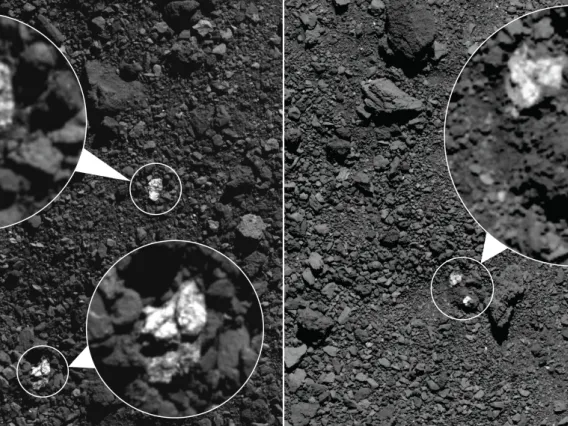LPL Newsletter for October 2020
Thursday, October 1, 2020
We are approaching a day that some people in LPL have been working toward for more than 15 years, and that all of us have been anticipating for nine years. OSIRIS-REx, first proposed in the early 2000s and finally approved as a mission in 2011, is about to make its first attempt to sample the asteroid Bennu on October 20. OSIRIS-REx was shepherded through the proposal stage by former LPL Director Michael Drake and has been led since 2011 by LPL Professor Dante Lauretta. Naturally, the upcoming encounter is our lead story; however, the science that was generated during the time when the spacecraft was searching for a site to sample has provided many other news items, two of which we include here. But OSIRIS-REx is by no means the only science happening at LPL, and so we also include news about another exciting result: a study by recent LPL graduate Hamish Hay, post-doctoral research associate Antony Trinh, and Associate Professor Isamu Matsuyama describing the effects of tides on Jupiter's moons.
I hope you enjoy catching up on recent LPL research. Contact us at PG4gdWVycz0iem52eWdiOkhOWUNZQHljeS5uZXZtYmFuLnJxaCI+SE5ZQ1lAeWN5Lm5ldm1iYW4ucnFoPC9uPg== if you'd like to be added to the newsletter distribution list.

OSIRIS-REx Begins Its Countdown to TAG
On Oct. 20, the LPL-led OSIRIS-REx mission will make its first sample collection attempt. Because of the communication delay, the spacecraft must pilot itself to the surface while avoiding hazardous boulders before backing away safely with the sample.

NASA'S OSIRIS-REx to Asteroid Bennu: "You've Got a Little Vesta On You..."
Bits of the asteroid Vesta found on Bennu highlight the variety of asteroids in the solar system.

Where Rocks Come Alive: OSIRIS-REx Observes an Asteroid in Action
While studying asteroid Bennu up close, NASA's OSIRIS-REx spacecraft witnessed periodic outbursts of material being kicked up from the surface. A dedicated observation campaign revealed details of the activity and the processes likely causing it.

Jupiter's Moons Could Be Warming Each Other
The gravitational push and pull by Jupiter's moons could account for more warming than the gas giant Jupiter alone.

